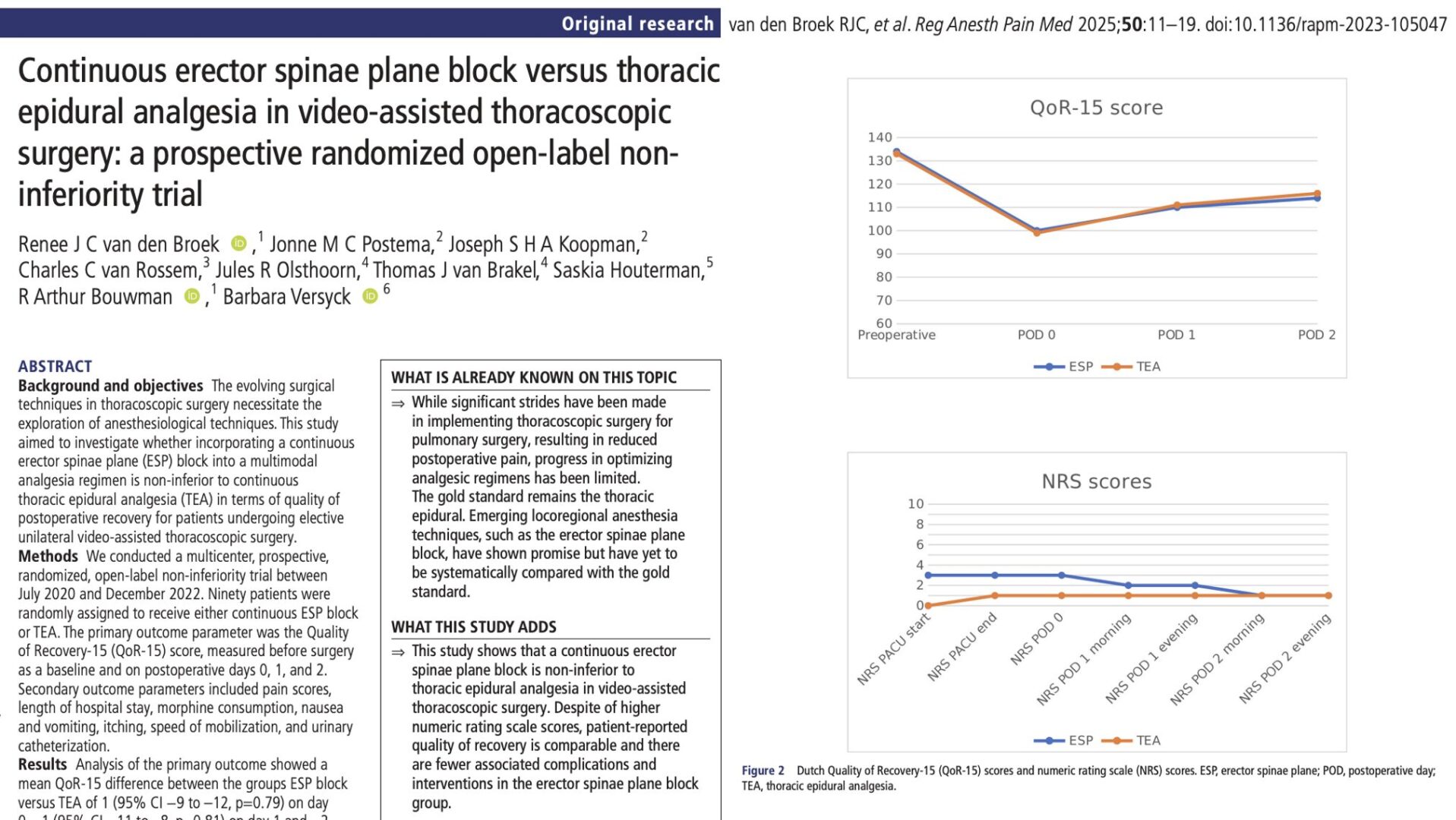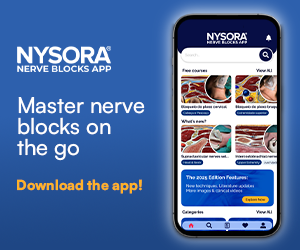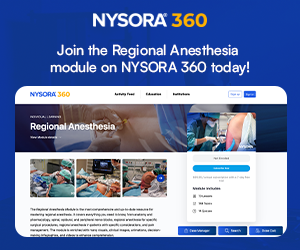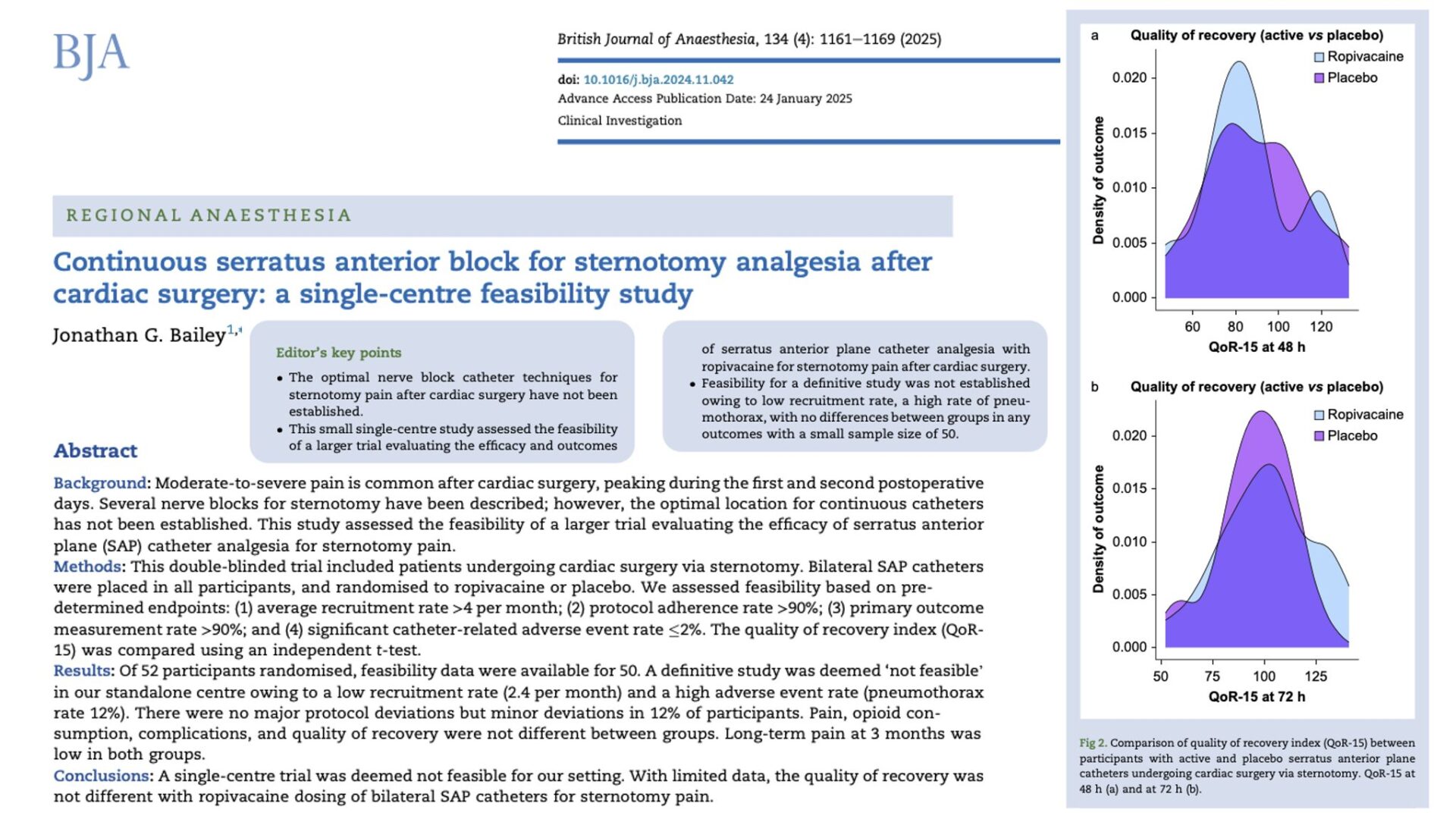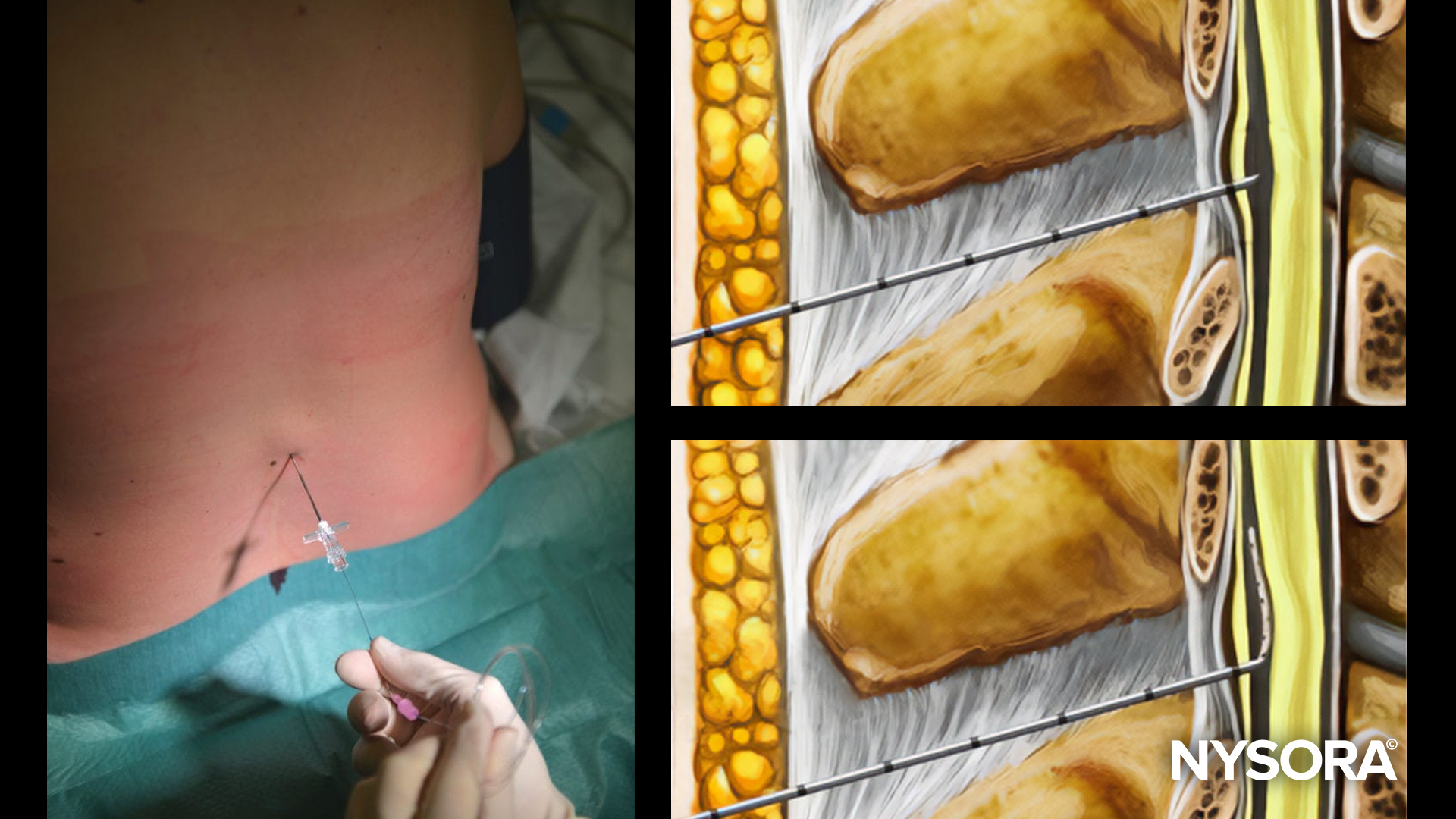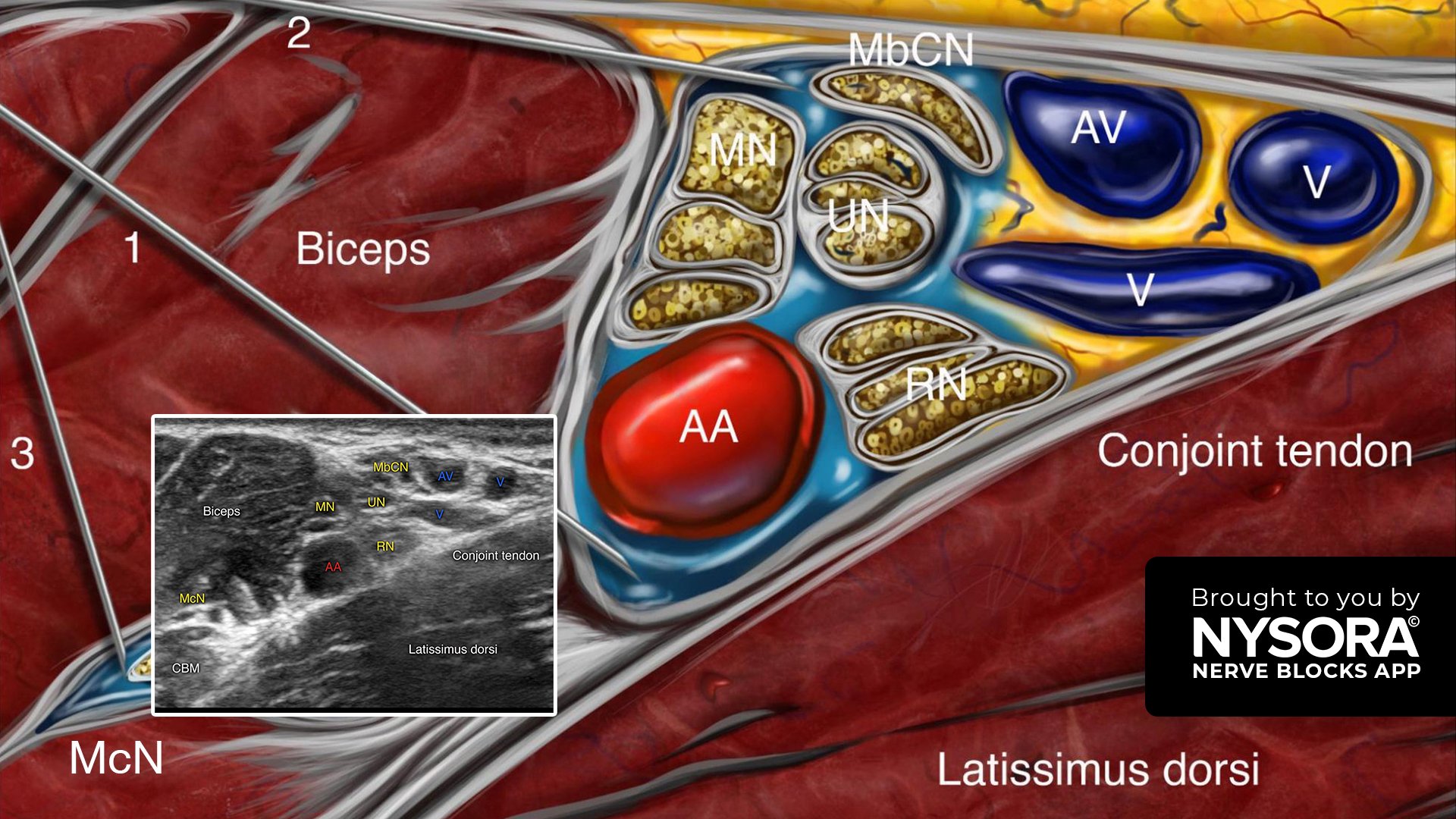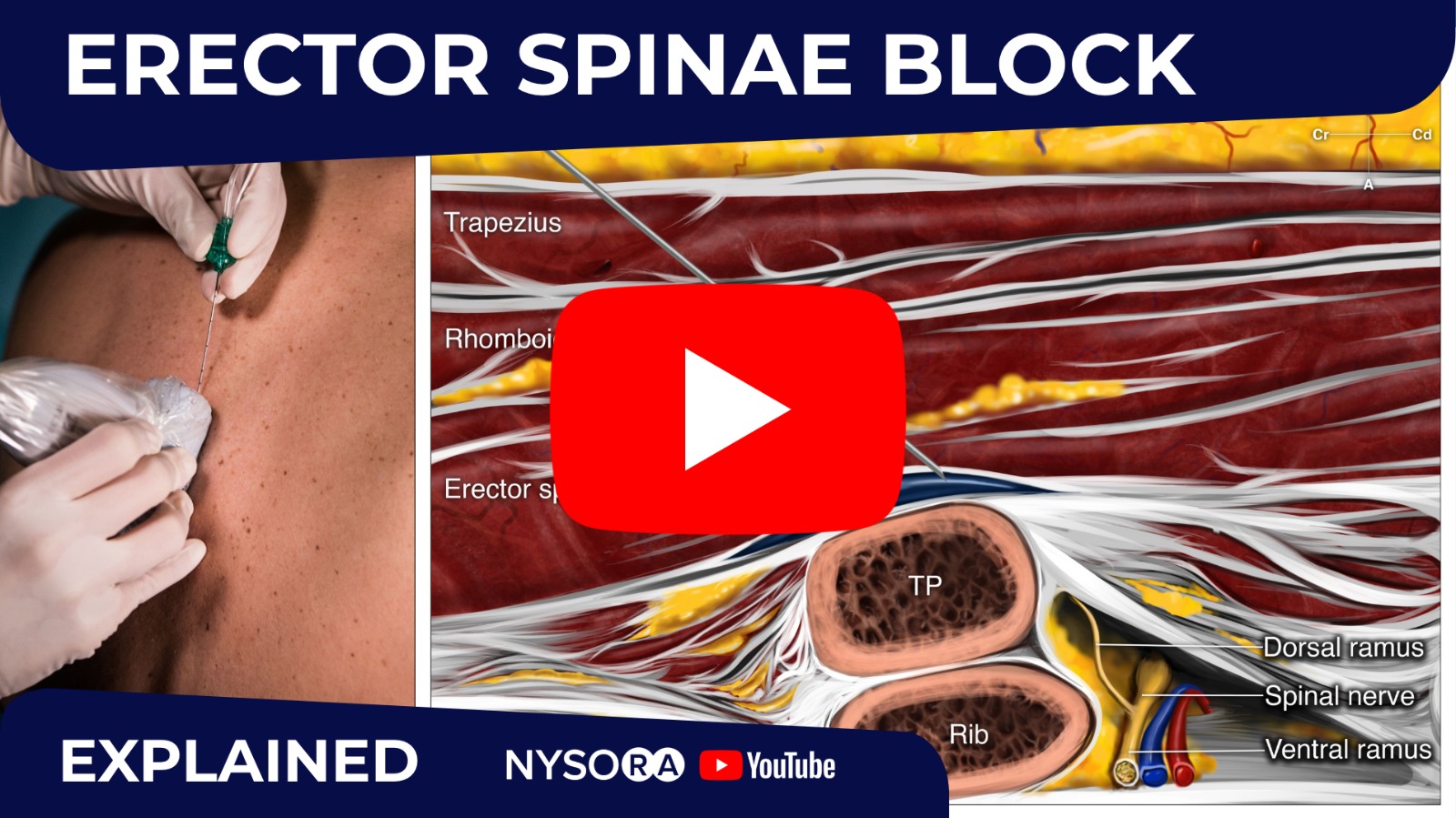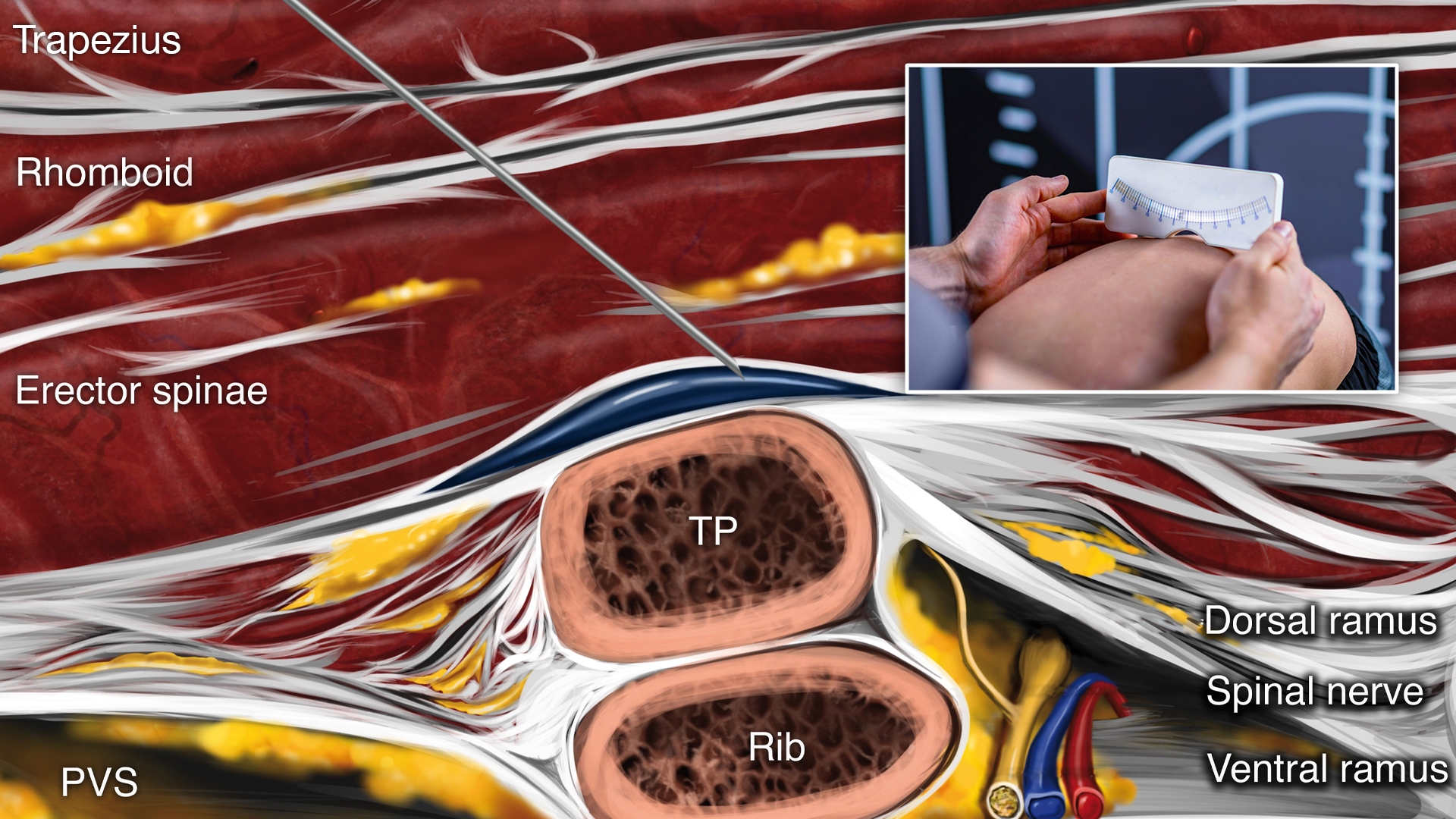Video-assisted thoracoscopic surgery (VATS) has revolutionized thoracic procedures by minimizing invasiveness, leading to reduced recovery times and postoperative complications. However, managing postoperative pain effectively remains a critical challenge. Thoracic epidural analgesia (TEA) has been the gold standard for thoracic pain control for decades, but it is associated with complications such as hypotension and urinary retention. Continuous erector spinae plane (ESP) block has emerged as a promising alternative due to its simpler administration and favorable side effect profile. This study evaluated whether continuous ESP block is non-inferior to TEA in terms of recovery quality and pain management following VATS.
Study objective and methods
The study aimed to determine if continuous ESP block provides non-inferior postoperative recovery quality compared to TEA in patients undergoing VATS lobectomy or wedge resection.
- Design: Multicenter, prospective, randomized, open-label, non-inferiority trial.
- Participants: Ninety patients undergoing elective VATS were included and randomized into two groups.
- ESP group: Ultrasound-guided catheter placement at T5 transverse process with continuous infusion of bupivacaine 0.125% at 5 mL/hour and intermittent boluses every 3 hours.
- TEA group: Epidural catheter placement at T5–T7 vertebral level with continuous infusion of bupivacaine or ropivacaine combined with sufentanil.
- Primary outcome: Quality of Recovery-15 (QoR-15) score on postoperative days (POD) 0, 1, and 2.
- Secondary outcomes: Pain scores, opioid consumption, length of hospital stay, urinary catheterization, complications, and mobilization.
Key findings
- Quality of recovery: QoR-15 scores were similar between groups on POD 0, 1, and 2, indicating non-inferiority of ESP compared to TEA.
- Pain scores: TEA resulted in lower pain scores on POD 0 at rest (median 1 for TEA vs. 3 for ESP; P = 0.01). Pain scores during movement and at later time points were comparable between groups.
- Complications and side effects: TEA was associated with higher rates of itching (37% vs. 2% on POD 1; P < 0.001) and urinary catheterization (70% vs. 21% on POD 1; P < 0.001). ESP block required fewer interventions for catheter adjustments.
- Opioid use: Patients in the ESP group required more postoperative rescue opioids compared to TEA (median 8 mg vs. 0 mg on POD 1; P < 0.001).
- Hospital stay and mobilization: Length of hospital stay and time to mobilization were similar between groups.
Conclusion
Continuous ESP block was found to be non-inferior to TEA in terms of quality of recovery following VATS. While TEA offered slightly better early pain control, it was associated with more complications, such as itching and urinary retention. ESP block, with its simpler administration and reduced side effects, offers a viable alternative to TEA for postoperative pain management.
Future research
Further studies should explore optimizing ESP block techniques to improve pain relief while maintaining its low complication profile. Larger trials comparing ESP block with other regional anesthesia methods in diverse patient populations are needed. Investigating long-term outcomes such as chronic pain prevention and functional recovery will provide a more comprehensive understanding of its benefits in VATS.
For more detailed information, refer to the full article in RAPM.
van den Broek RJC, Postema JMC, Koopman JSHA, et al. Continuous erector spinae plane block versus thoracic epidural analgesia in video-assisted thoracoscopic surgery: a prospective randomized open-label non-inferiority trial. Reg Anesth Pain Med. 2025;50(1):11-19.
Download the Nerve Blocks App HERE for in-depth insights on the erector spinae plane block. Prefer a physical copy? The bestselling NYSORA Nerve Blocks App is available in book format — an essential resource for mastering nerve blocks!
